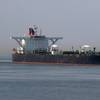Groundbreaking, Start of “Green” Marine Highway Project
The Obama Administration’s continuing commitment to a more efficient and green U.S. transportation system moved forward as Maritime Administrator David T. Matsuda joined other federal, state and local officials at the Port of Stockton to officially break ground on California’s new Green Trade Corridor on Oct. 26
The $30m Transportation Investment Generating Economic Recovery (TIGER) grant will help develop a viable waterborne shipping route between Oakland, Stockton and West Sacramento, which immediately creates a new transportation alternative to conventional freight and cargo movement in Northern California.
“The Green Trade Corridor project will demonstrate the environmental benefits of freight transportation on America’s Marine Highways, not only for California but for all of America,” said U.S. Transportation Secretary Ray LaHood. “It will also create good, solid transportation jobs for today and far into the future.”
Currently, international trade, imports, and exports, are moved almost exclusively by truck or rail in California. The TIGER grant to the ports of Oakland, West Sacramento, and Stockton enables a partnership that will use barges to move cargo along the inland waterway system from Stockton and West Sacramento to Oakland for ultimate shipment to the Far East. Vessel operations are scheduled to begin in early 2012.
“Not only will this project ultimately reduce air emissions from trucks on Interstate 580, it will also create new alternatives throughout Northern California to transport exports to the Far East,” said Administrator Matsuda.
Federal grants will be used to purchase or upgrade port facilities and the equipment needed to make the marine highway system a reality, including:
• the construction of a staging area at the Port of Stockton for cargoes dedicated to the new marine highway, and the purchase of two cranes and a barge to support the service;
• the construction of a distribution center and the purchase of a crane in West Sacramento where freight, mostly agricultural products from California’s Central Valley, will be “re-packed,” into larger containers for transport on water; and
• the installation of electrical supply at ship berths in the Port of Oakland, which will allow operators to shut down an ocean-going vessel’s diesel engines while in port, further reducing the air emissions in this “green trade corridor.”
The TIGER program, part of the American Recovery and Reinvestment Act, is designed to promote innovative, multi-modal and multi-jurisdictional transportation projects that provide significant economic and environmental benefits to an entire metropolitan area, region or the nation.
The America’s Marine Highway program is a new Congressionally-authorized initiative to move more cargo and passengers, when possible, on water routes to relieve landside congestion on the roadways and reduce emissions. Nationwide, 18 rivers and coastal routes have been identified to participate in the program.











